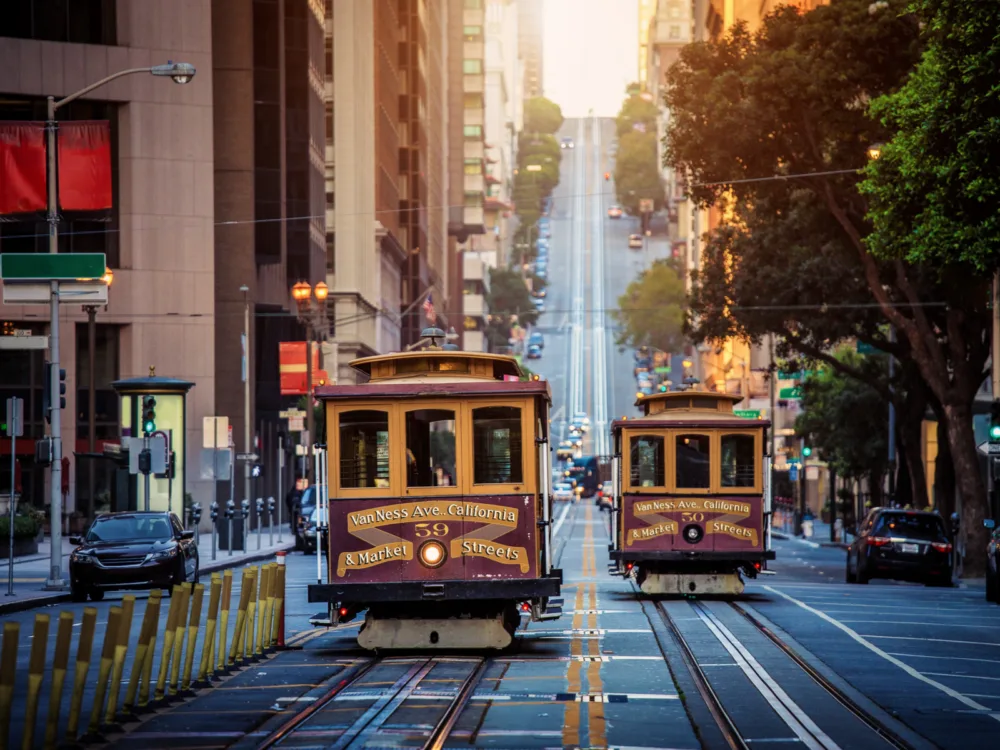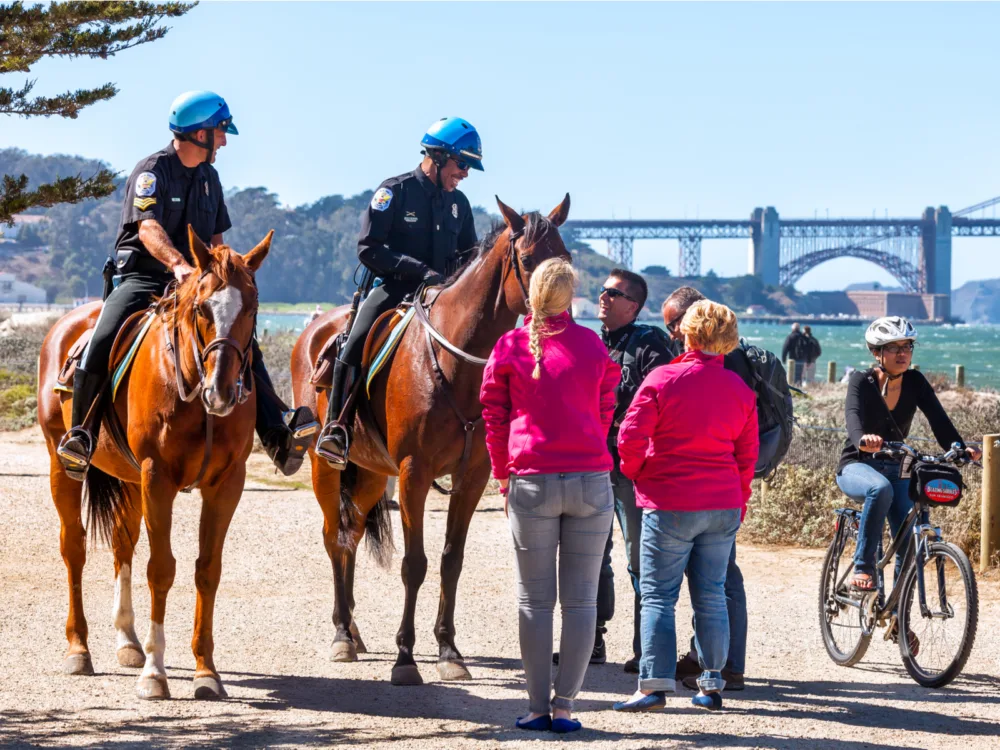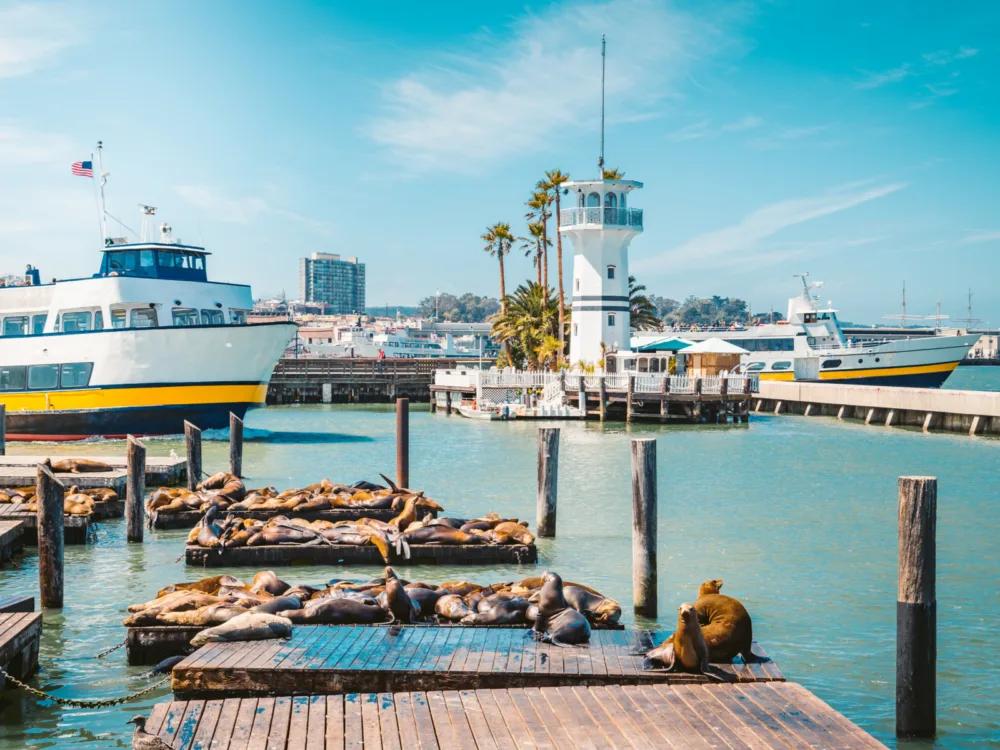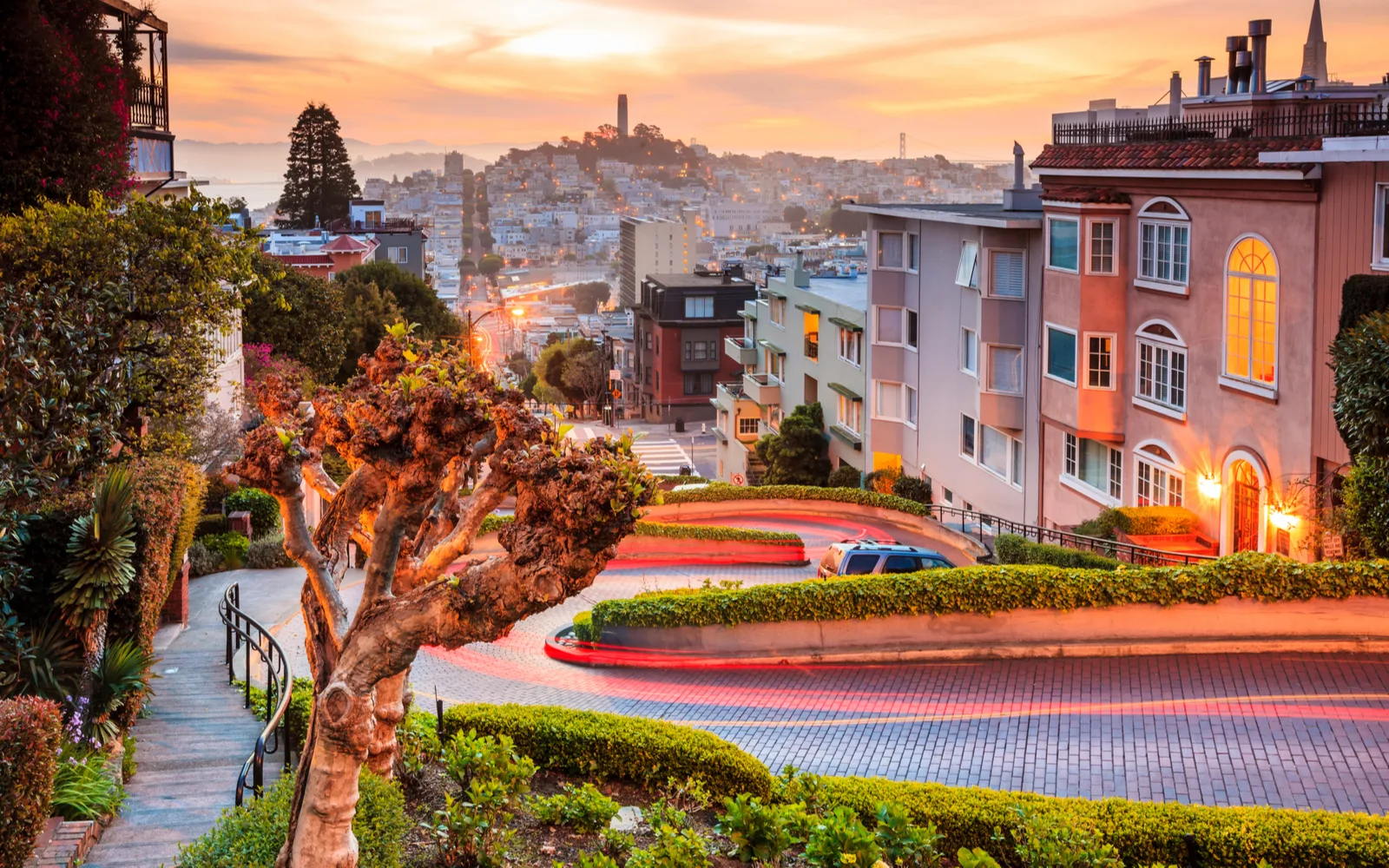Is San Francisco safe to visit in 2025?
“Is San Francisco safe?” It’s a question that often pops up for anyone planning a trip to this famed city, known for its iconic Golden Gate Bridge and vibrant culture.
Below, we’ll take a closer look at the safety aspects of San Francisco, exploring everything from bustling street corners to tranquil parks, to give you a clearer picture of what to expect and how to stay secure in the City by the Bay — let us be your guide!
Is San Francisco Safe to Visit in 2025?

Candadstock/Shutterstock
Yes, San Francisco is mostly safe to visit. However, many people forget that despite the quaint photos of sites such as the neighborhoods of Victorian houses, San Francisco is still a big city with all of the risks of visiting a big city.
Tourists can be victims of petty theft, and although violent crime incidents are rare, they still happen. Crime in San Francisco does happen, and it is about as frequent as you might expect for a big city, although it has some strange extremes.
The overall crime rate according to U.S. News & World Report is 439.5 incidents per 100,000 people. The rate of violent crime is higher than the national average but lower than the average for most big cities.
However, the rate of property crime is much higher than in other big cities, which drives the overall crime rate in San Francisco up. The most common crime in San Francisco is larceny or theft.
This includes:
- Motor vehicle theft
- Vehicle break-ins
- Pickpocketing
- Bag snatching
Violent crimes are rare, and the most common violent crime is robbery.
For some reason, there were a lot of news reports in 2022 about the high crime rate in San Francisco that painted the city as a lawless wasteland. However, actual crime statistics don’t back up the data.
Crime in San Francisco was higher in 2022 than in 2020, but it still has not reached pre-pandemic levels and is nowhere near as bad as it was in the 1990s, when violent crime peaked in town. The levels for most crimes were lower in 2022 than in 2019, except for motor vehicle theft. Many people are nervous about visiting San Francisco because they heard about the high homelessness problem.
San Francisco does have a very large homeless population. According to city statistics, 7,754 people are homeless, although actual numbers are probably much higher. Skyrocketing housing costs in the Bay Area as well as growing inequality put many people out on the street.
It’s a mistake to treat homeless people as a source of danger. The vast majority are just people that have fallen on hard times and keep to themselves. It’s true that some homeless people steal things, use drugs, or are disorderly — but so are a lot of people who have houses.
Finally, it’s worth thinking about the natural disasters that might wait for you if you visit San Francisco. Earthquakes and attendant risks such as landslides are present all the time in California, and you might feel tremors while you are there.
Read up on earthquake safety protocols before you visit. You should also be careful when swimming in San Francisco as many local beaches have strong riptides and currents.
Ready to Book?
Unlock Exclusive Discounts on Expedia.com!
Got Travel Insurance?
Protect yourself for unexpected interruptions.
Compare Plans We may be compensated when you book after clicking on one of our links.Crime in San Francisco

cdrin/Shutterstock
Most people are worried about crime when they travel, especially to bigger cities. The news items about crime waves in San Francisco probably didn’t help with any nerves about visiting the city.
Tourists don’t have much to worry about in terms of danger to life and limb in San Francisco, although you probably want to watch your wallet while you are in town.
According to Neighborhood Scout, the violent crime rate in San Francisco is slightly above the national median, but still below the average for most big cities. However, the property crime rate is much, much higher than the median for both the nation and the state of California.
You have a 1 in 20 chance of being the victim of a property crime in San Francisco. The burglary rate in San Francisco is 67% above the national average.
The San Francisco government offers a breakdown of all major crime categories committed in the city. The vast, vast majority of crimes committed were property crimes. Larceny and theft make up a whopping 77.9% of the total crime total, followed by auto theft, which makes up 7.8%, burglary, which makes up 7.3%, and robbery, which makes up 2.9% of total crimes in the city.
The closest non-property related crime is assault, which makes up 3.2% of total crimes in the city. The few violent crimes that occur in the city don’t often affect tourists, so you should be safe.
As for the high property crime rate, some basic precautions and staying alert as you move around the city can help you avoid being a victim. There are a few theories as to why property crime is so high in San Francisco.
Local media put forward the theory that San Francisco attracts many out-of-towners, both tourists and commuters, which creates the perfect opportunity for thieves. San Francisco is also one of the most unequal cities in the United States, and the wealth gap grew during the 2020-2021 lockdowns.
High inequality is both a motive and an opportunity, as people are pushed out of their homes and stable jobs and resentment grows towards those who are wealthier.
Growing desperation due to increased pandemic poverty directly explains some of the types of theft that are growing the fastest, such as shoplifting.
Pickpocketing
The most common crime in San Francisco is theft of all kinds. Of these types of theft, the one that is most likely to affect tourists is pickpocketing.
Pickpockets and bag snatchers take advantage of tourist inattention in popular spaces such as the Mission District. Don’t let the beautiful sites of San Francisco distract you from being aware of your surroundings.
Notice if someone is getting suspiciously close to you or seems interested in your bag. Be careful of typical tourist scams designed to get someone’s money, such as petitioners on the street or someone “accidentally” falling on you.
Thieves often operate on public transportation, so take extra precautions when you get on the train, cable car, or bus. Make sure that your bags are zipped and that your wallet is in your front pocket.
In San Francisco, it makes sense to take the basic precautions that you would in any other big city. This means that you shouldn’t walk around with a camera around your neck or your phone in your hand.
Make sure that your valuables are safely tucked away. You don’t want to draw too much attention to yourself by flaunting any expensive items that would be a target for thieves. On rare occasions, robbery attempts turn violent.
There are incidents of mugging and armed robbery in San Francisco, including incidents that target tourists. Armed robbers and muggers tend to target people walking in seedy areas after dark, so be careful as you move around the city and confine most of your exploring to the daytime.
If you are attacked, focus on getting away safely instead of holding on to your valuables — your life is more important than your wallet.
Vehicle Break-ins
Even as other crime numbers actually decrease, the rate of vehicle related crime is increasing in San Francisco. This includes motor vehicle theft, car parts theft, and vehicle break-ins. It seems as if every San Francisco local or visitor has a horror story about a theft from their car.
The most common operation is the “smash and grab.” During this type of theft, thieves break open a car window and take any valuables that they find inside. They target parked cars.
Vehicle break-ins commonly happen due to driver carelessness, so a few precautions can help you avoid being the victim of this crime. Never leave anything in your car after you park it, including spare change or a car charger.
If you do leave something in the car, make sure that it is secure in your trunk or glove compartment and that nobody sees what you have inside (that means not putting in shopping bags and going away). Park in a secure parking garage with an attendant, not an open lot or street parking.
The best way to prevent vehicle break-ins is not to bring a car altogether if you are visiting San Francisco. Public transportation in this city is some of the best in the nation and you will get to avoid the infamous traffic.
Avoiding Bad Areas

Myra Thompson/Shutterstock
There are certain neighborhoods in San Francisco that are more dangerous than others. The Tenderloin has a mixed reputation in San Francisco. It is home to high-end hotels and historic landmarks, and most of San Francisco’s homeless population.
While most homeless people just want to mind their own business and get through their lives, situations sometimes get tense. Be careful near Taylor and Ellis, an intersection with a lot of homeless services.
The Mission District is very beautiful, but as you head east, it gets a little sketchier. Avoid the areas around Valencia Street and Guerrero Street after dark. The same is true for SoMa, an industrial area to the south of Market Street.
Frequently Asked Questions

Canadastock/Shutterstock
Here are some of the most commonly asked questions about San Francisco:
Is it safe to visit San Francisco right now?
News about rising crime rates in San Francisco has scared many people away from the city. However, the reality on the ground is a far cry from the sensationalist news stories. San Francisco is perfectly safe to visit right now.
Where is the safest area to stay in San Francisco?
The posh area of Nob Hill is safe both day and night. Marina District is also another safe neighborhood and boasts easy parking, which is often at a premium in the city. However, keep in mind that both neighborhoods are fairly pricey.
Is it safe to walk the streets of San Francisco at night?
In most parts of San Francisco, it is safe to walk around at night and you’ll probably find a crowd of other people also taking a stroll. However, some parts of the Tenderloin and the eastern part of the Mission District are not safe after dark.
Is New York safer than San Francisco?
According to crime statistics, New York has a lower overall crime rate than San Francisco. However, the East Coast city has a higher violent crime rate, so physically San Francisco is safer.
Do tourists still go to San Francisco?
San Francisco is a very popular city with tourists and has been for decades. No news stories about crime can scare away people wanting to see the famous sights.
So, Is San Francisco Safe to Visit?
| 📈 Overall crime rate | 54 per 1,000 (high) |
| 👮♂️ Most common crime | Petty theft |
| 🏠 Worst neighborhood | Tenderloin |
| ❓ Safety tip | Don't go out at night or walk alone |
Overall, San Francisco is safe to visit. The city does have a high rate of petty theft and other property crimes, but you can minimize your chances of being a victim with a few precautions. So what are you waiting for — book your trip today!






